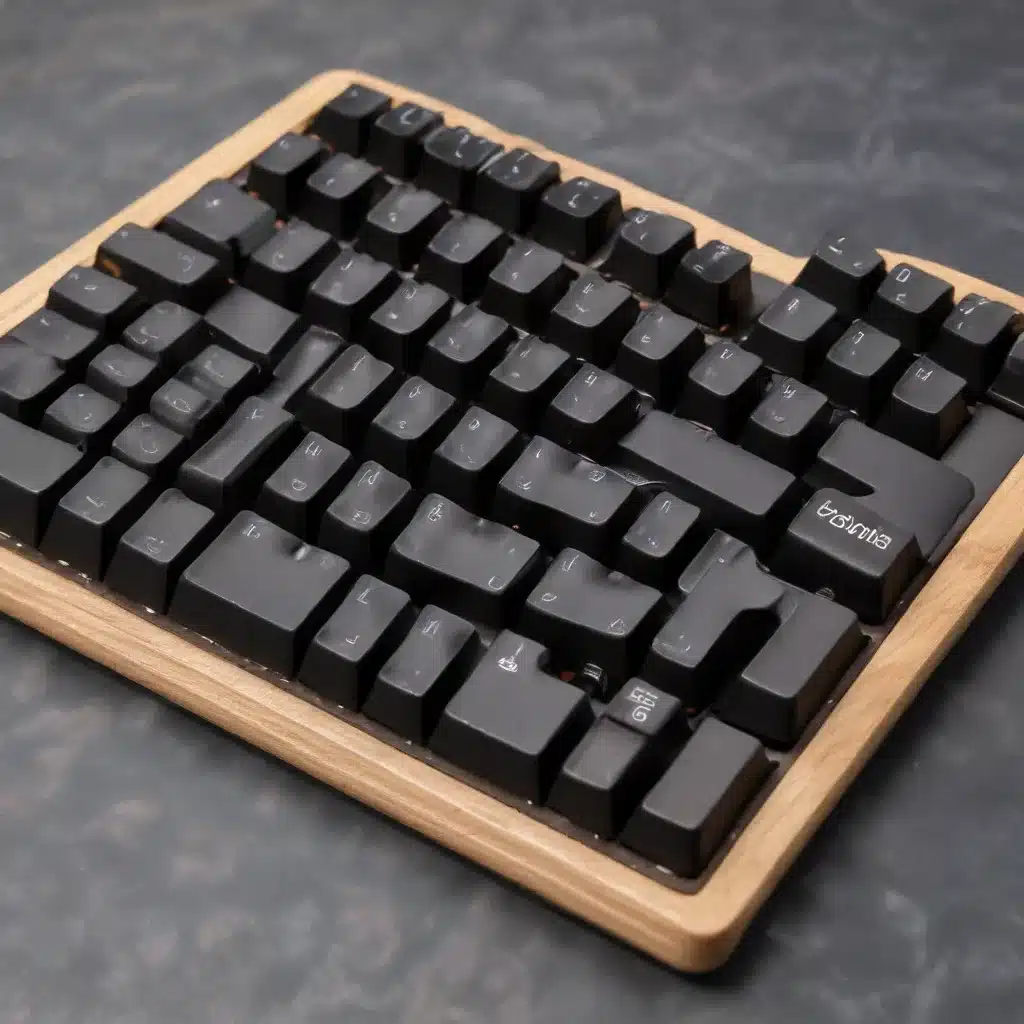
Navigating the Ergonomic Keyboard Landscape
As a seasoned IT professional, I’ve had the privilege of exploring the ever-evolving world of ergonomic keyboards. From the classic Microsoft Natural to the cutting-edge split designs, the options for improving typing comfort and efficiency have expanded significantly. However, one particular keyboard has caught my eye and captured my enthusiasm – the Bastard Keyboards Charybdis.
The Charybdis, named after the legendary Greek sea monster, is a split ergomechanical keyboard that offers a unique set of features and customization options. Unlike traditional keyboards, the Charybdis is designed to promote a more natural hand and wrist positioning, reducing strain and fatigue during extended typing sessions.
Diving into the Charybdis Project
As an IT professional with a penchant for tinkering, I decided to embark on the Charybdis building journey. While the thought of extensive soldering and 3D printing was initially daunting, I was determined to step outside my comfort zone and immerse myself in a new hardware project.
The first step was to carefully review the available resources and select the Charybdis variant that best suited my needs. The Charybdis offers two size options – the standard 56-key model and the compact 35-key Charybdis Nano. Given my preference for a more comprehensive key layout and the need to accommodate my muscle memory, I opted for the 56-key Charybdis.
Gathering the Necessary Tools and Supplies
Preparing for the build was a crucial step. I scoured the recommended tools and supplies list provided by Bastard Keyboards and made sure I had everything I needed, from a soldering iron and solder to a 3D printer and filament. While the initial investment in these tools may seem daunting, I knew they would be valuable assets for future projects, making the cost well worth it.
Mastering the Assembly Process
With the necessary tools and parts in hand, I delved into the assembly process, following the comprehensive instructions and video guide provided by Bastard Keyboards. Despite my lack of previous experience in hardware projects, I found the step-by-step guidance to be exceptionally clear and easy to follow.
One of the challenges I encountered was the decision to make the Charybdis hot-swappable, a feature not offered in the standard design. This added an extra layer of complexity, as I had to carefully install the Mill-Max sockets and secure the flexible PCBs within the 3D-printed case. While it was a time-consuming and somewhat messy process, the end result was a keyboard that allowed me to easily experiment with different switch types and configurations.
Troubleshooting and Overcoming Challenges
No hardware project is complete without a few hiccups, and the Charybdis build was no exception. I encountered a few issues during the testing phase, including broken traces and LED problems on the right side of the keyboard. However, with the help of the Bastard Keyboards community on Discord, I was able to quickly identify and resolve these issues.
One particularly valuable lesson I learned was the importance of patience and attention to detail. Rushing through the process or skipping steps often led to more problems down the line. By taking my time, carefully following the instructions, and reaching out for assistance when needed, I was able to successfully complete the build and have a fully functional, customizable keyboard.
Embracing the Unique Design and Features
As I began using the Charybdis, I couldn’t help but appreciate the thoughtful design and the potential benefits it offered. The split, ergonomic layout and the strategic placement of the trackball under the palm were particularly intriguing. While I’m still in the early stages of acclimating to this new typing experience, I’m excited to see how the Charybdis can improve my comfort and productivity.
One of the standout features of the Charybdis is its customizable key layout. The Vial QMK firmware, which comes pre-installed, allows for seamless customization of the key assignments and layers. This level of flexibility is a game-changer, as it enables me to tailor the keyboard to my specific needs and preferences.
Embracing the Jank and Exploring Ergonomic Possibilities
As an IT professional, I’ve always been drawn to the intersection of technology and ergonomics. The Charybdis project has been a fascinating exploration of this intersection, and I’m excited to share my insights and experiences with the wider community.
While the Charybdis may not be a mass-produced, polished product like some of the more mainstream ergonomic keyboards, its unique design and customization potential make it a compelling option for those who are willing to embrace the “jank” and dive into the world of DIY ergonomic keyboards.
For readers looking to embark on a similar journey, I highly recommend the Charybdis as a worthy contender. With its combination of ergonomic features, customization options, and the sense of accomplishment that comes with building it yourself, the Charybdis offers a unique and rewarding experience.
Conclusion: Embracing the Ergonomic Revolution
As I reflect on my experience with the Charybdis, I’m struck by the profound impact that ergonomic keyboards can have on our overall well-being and productivity. The Charybdis, with its split design, customizable layout, and integrated trackball, represents a significant step forward in the evolution of ergonomic input devices.
For IT professionals and enthusiasts alike, the Charybdis project serves as a testament to the power of innovation and the willingness to step outside of one’s comfort zone. By embracing the “jank” and the challenges that come with building a custom keyboard, we can unlock new levels of comfort, efficiency, and personal expression in our daily computing tasks.
I encourage readers to consider the Charybdis, or other similar ergonomic keyboard projects, as a means of exploring the cutting edge of input device technology. The rewards, both in terms of physical well-being and the sense of accomplishment, are well worth the effort.
As I continue to refine my Charybdis setup and explore its full potential, I look forward to sharing more insights and experiences with the IT Fix community. Together, let’s embrace the ergonomic revolution and unlock the true power of our hands and minds.












